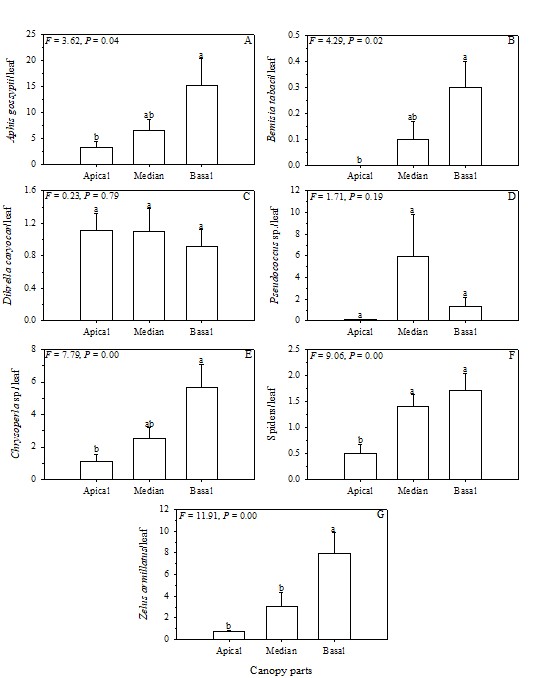Abstract
Caryocar brasiliense Camb. (Malpighiales: Caryocaraceae) trees are widely distributed throughout the Cerrado ecosystem. The fruits of C. brasiliense trees are used by humans for food and as the main income source in many communities. C. brasiliense conservation is seriously threatened due to habitat loss caused by the land-use change. Sucking insects constitute an important ecological driver that potentially impact C. brasiliense survival in degraded environments. In addition, insects sampling methodologies for application in studies related to the conservation of C. brasiliense are poorly developed. In this study, sucking insects (Hemiptera) and their predators were recorded in three vertical strata of Caryocar brasiliense canopies. The distribution of sucking species showed vertical stratification along the canopy structure of C. brasiliense. The basal part of the canopy had the highest numbers of sucking insects Aphis gossypii (Glover 1877) (Hemiptera: Aphididae) and Bemisia tabaci (Genn. 1889) (Hemiptera: Aleyrodidae), and their predators Chrysoperla sp. (Neuroptera: Chrysopidae), spiders (Araneae), and Zelus armillatus (Lep. & Servi., 1825) (Hemiptera: Reduviidae). Predators' distribution follows the resource availability and preferred C. brasiliense tree parts with a higher abundance of prey.
Keywords:
aphids; Bemisia tabaci; Brazilian Cerrado; Dikrella caryocar; Hemiptera; Pseudococcus sp.; vertical stratification

 Thumbnail
Thumbnail
